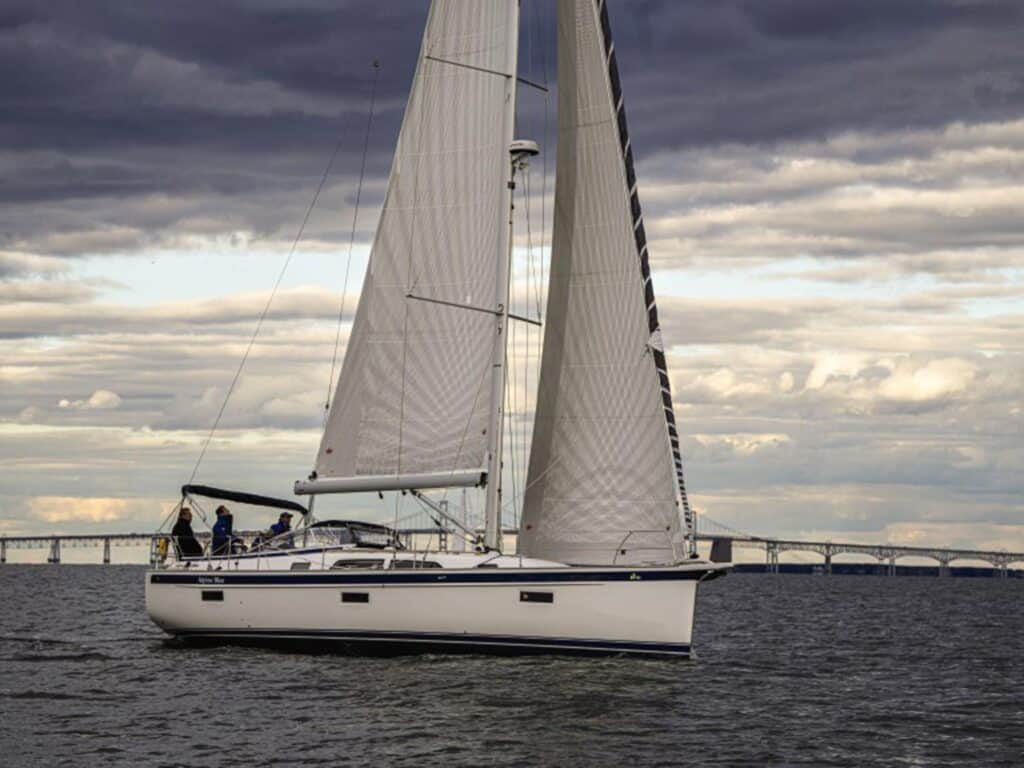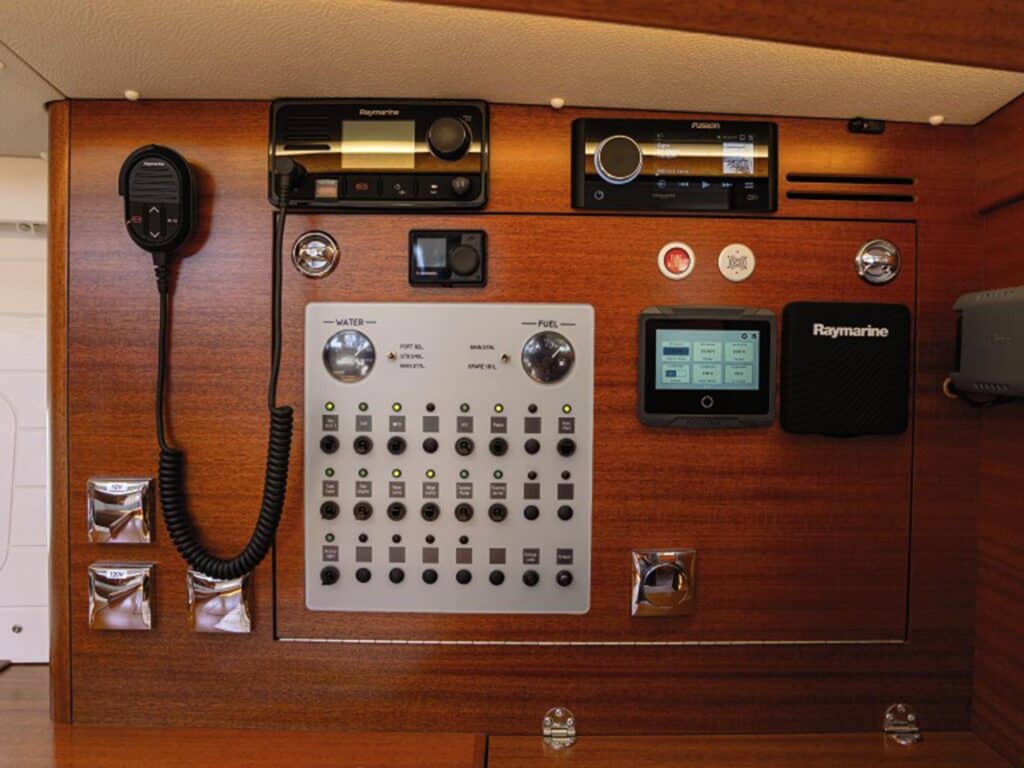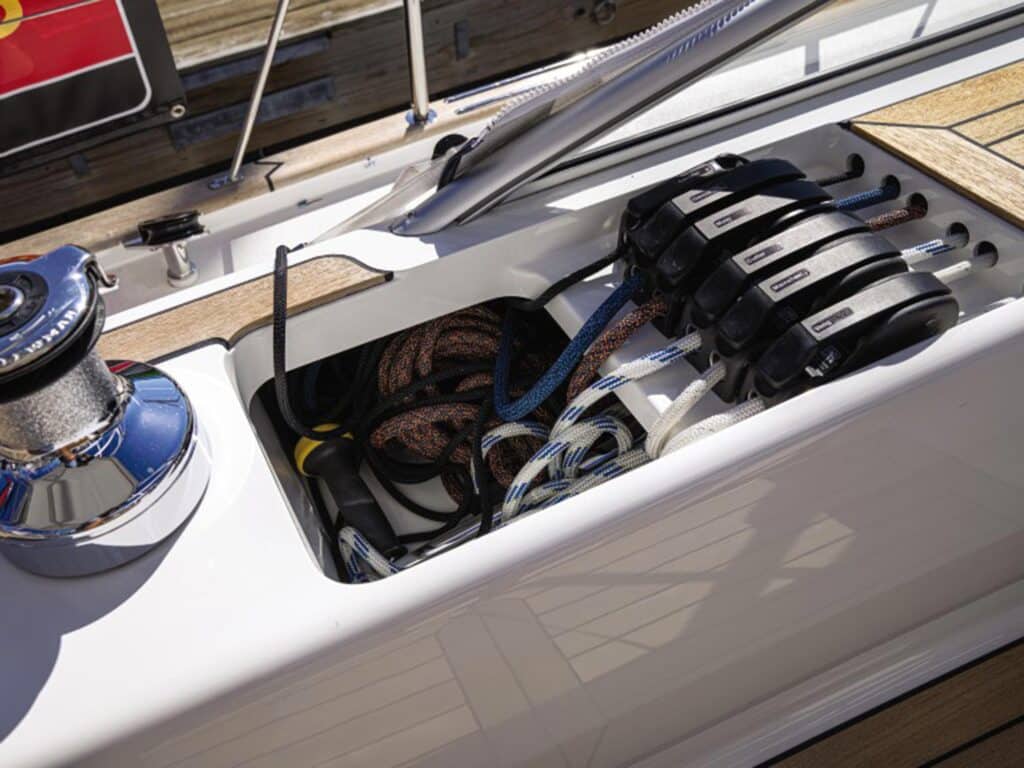
In the ongoing history of production-yacht construction, one of the more astonishing lists covers what seemed like iconic, top-notch sailboat brands—Little Harbor, Alden, Valiant and Tayana, to name a few—that have simply ceased to exist. But then there’s the story of shipyards such as Sweden’s Hallberg-Rassy, named for the founding boatbuilders Harry Hallberg and Christoph Rassy. In one iteration or another, it’s been knocking out boats for 80 years now. After splashing nearly 10,000 yachts, it shows no signs of slowing.
There are lots of reasons for this longevity, a major one being that once a sailor has owned a Hallberg-Rassy, at some point he or she will likely trade up or down for another one. Quality, after all, begets quality, and it’s a testament to the brand that there are so many repeat customers.
Another strong reason is that, with the brilliant Argentine naval architect Germán Frers driving Hallberg-Rassy’s design efforts for several decades, the company has continued to evolve.
At no time has this been more evident than with Frers’ latest creation: the aft-cockpit, twin-rudder, performance-oriented Hallberg-Rassy 400. (A sistership, the Hallberg-Rassy 40 C, shares the same hull but has the center-cockpit configuration that’s synonymous with the company.) As a judge in our 2023 Boat of the Year competition, I was part of the unanimous panel that named the 400 our Import Boat of the Year.
With its integrated bowsprit, triple-spreader Seldén rig, rectangular hull windows and dual helm stations, the 400 at first glance appears to occupy the same sort of territory we’re used to seeing from all the hot French naval architects who dominate contemporary sailboat design. Yet here is an important difference: no chines. In the pursuit of a seakindly ride and good manners offshore, Frers has instead gone with a rounder hull form, not a V-shape—a most effective approach.
With the plumb bow, Frers has also maximized the waterline, which is something you notice as soon as you step aboard: The 400 seems like a much larger vessel than 40 feet. But don’t fret, Hallberg-Rassy aficionados: Frers has kept one of the line’s signature features, the nifty windshield that accents the front edge of the cockpit, with the traveler and a pair of solar panels stationed just forward.

It’s a beamy boat (another reason for the sense of volume and space on board). That beam is carried well aft, a fact that necessitated the twin wheel/rudder setup, which also provides the benefit of total control when well-heeled under sail. The double helms and a split backstay allow easy access to the optional drop-down swim platform aft. While a self-tacking jib is also an option, the standard headsail is slightly overlapped, about 110 percent, which is big enough to provide plenty of power but is still easily tacked. The sheet leads run between the inboard and outboard shrouds, giving the skipper very tight sheeting angles to optimize closehauled upwind performance while making egress unimpeded when moving forward or aft along the side decks. I’m having an extremely difficult time understanding why every builder doesn’t do this.
The hand-laid laminate construction includes a Divinycell PVC foam core for insulation and a favorable strength-to-weight ratio, and what the company calls an integrated “keel stiffener,” an internal reinforcement that runs longitudinally and fore and aft, and is laminated to the hull, as is the hull/deck bond, capped by a formidable bulwark. The result is a strong, robust, monolithic structure. The stiffener negates the need for a central bulkhead in the interior, and this, along with the deck-stepped mast, truly opens up the inviting central salon.
Mahogany is standard for the interior furniture, though our test boat had the inviting European oak option. The joiner work is nothing less than exquisite; the Swedes are certainly craftsmen of the highest order. Tankage (two fuel tanks and three water tanks) is centralized in the hull, again in the interest of optimizing performance.

There is a trio of different layouts, the major differences being the choice of one or two staterooms aft, one or two heads, and three designs for the owner’s stateroom forward. Options include a dishwasher, washing machine, extra freezer, lee cloths, TV and so on. Our test boat had retractable bow and stern thrusters, electric furling for the main and jib, electric winches, and air conditioning, all optional.
Interestingly, our test boat lacked a generator (the owner, who was aboard for our sea trials, laughed and said, “I don’t want to service two engines”). Our in-house tech guru and Boat of the Year judge, Ed Sherman, definitely approved. “This boat was one of several in our group that has taken a no-generator approach,” he said. “Using Mastervolt lithium batteries and both 12- and 24-volt electrical subsystems, this fully equipped cruiser will regenerate battery voltage via the 60 hp main engine when needed. It was beautifully executed.”
Our test sail got off to a disappointing start, as the wind on Chesapeake Bay was nearly imperceptible. But it slowly filled in, and while the breeze never topped 10 knots, the performance was eye-opening, especially when we unleashed the code zero headsail tacked to the bowsprit and reached off at nearly 8 knots, an impressive number given the conditions. Those twin wheels with rack-and-pinion steering provided exact fingertip control, and the sightlines sitting well outboard were terrific. It’s a boat built to go places with style and efficiency.
Frers has been at this game for quite some time now, but clearly, he hasn’t lost his fastball. Hallberg-Rassy has built its reputation on tough boats that fare well under sail in the stormy northern seas, and the 400 ratchets up the performance side of the equation. That’s what you get when the worlds of tradition and advancement collide.
Hallberg-Rassy 400 Specifications
| LOA | 40’4″ |
| LWL | 38’6″ |
| BEAM | 13’9″ |
| DRAFT | 6’4″ |
| SAIL AREA | 970 sq. ft. |
| DISPLACEMENT | 24,250 lb. |
| D/L | 190 |
| SA/D | 18.5 |
| WATER | 137 gal. |
| FUEL | 106 gal. |
| MAST HEIGHT | 64’10” |
| ENGINE | Volvo Penta D2-60 (saildrive) |
| DESIGNER | Germán Frers |
| PRICE | $650,000 |
| WEBSITE | hallberg-rassy.com |
Herb McCormick is former editor-in-chief of Cruising World and the yachting correspondent for The New York Times. An author of five nautical books, he’s owned several sailboats, including his current Pearson 365 and Pearson Ensign.








